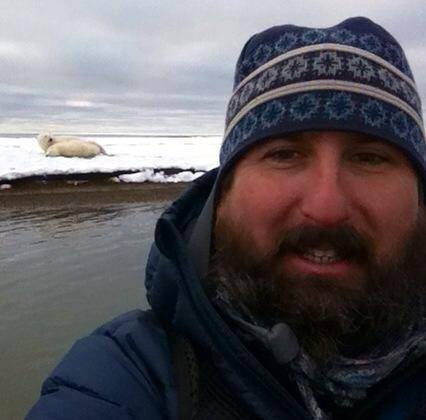Jason Matthews never stopped looking for the wildest place on earth.
He grew up in the suburbs of North Little Rock, on the edge of where the boxed houses and paved roads end, and grass and tall trees begin. He said he spent most of his childhood exploring those woods, leaving the "overdeveloped world" behind.
When he left for college, he attended the University of Central Arkansas for a semester and then the University of Arkansas at Little Rock but moved on from those schools and chose to go across the country to Montana.
"I knew I wanted to be someplace with a lot of wild land and landscapes," Matthews said. That was 25 years ago, and Matthews is still living there.
When he returned home to Arkansas one year, he discovered that the woods he used to play in had turned into Lakewood Village. Matthews felt as though everything he had loved about his childhood was now gone.
"Getting to be in the woods all the time, and then seeing them disappear," Matthews said. "It led to me becoming an advocate for wildness, for wilderness."
And even Montana, the wildest place he first traveled, is beginning to disappear. The "cancerous development" Matthews saw in Arkansas was beginning to suck the wildness out of the last refuge Matthews had found.
"That's how you end up in the Arctic wilderness searching for bears," Matthews said.
Matthews was a part of an expedition funded by National Geographic to search out a grizzly-polar bear hybrid, a rare species mix, which Matthews said is known to possibly exist in only two places: the Arctic National Wildlife Refuge, known as ANWR, in Alaska and the Nunavut province of Canada.
"ANWR is the last bit of real wilderness in North America," Matthews said.
Matthews, along with National Geographic television personality Casey Anderson, spent last fall in the Arctic refuge tracking polar bears and trying to discover oddities in their behavior that might point to their being hybrids. It was all for a television show for National Geographic called Die Trying.
He explained that while polar bears would never venture into an environment where grizzles thrive, some grizzles will travel to the coast looking for caribou. In that area, they are only a few miles away from the polar bears.
"Imagine you're a male grizzly," Matthews said. "And you've just been feeding on some caribou calves and you smell a female in season a mile away. You might just go and meet that female."
Even if it's a polar bear.
Matthews said he didn't have very much hope of finding a brown polar bear living in the Arctic. A bear with brown fur wouldn't last very long because it would be unable to hunt, it would stand out in stark contrast to the white of the ice and snow in the Arctic. Matthews was looking for any deviation from the basic look of a polar bear.
"If you looked at thousands of images of polar bears, you would see very little difference in how they look," Matthews said. "I hate to say it, because it's not entirely true, but if you've seen one polar bear, you've basically seen them all."
With grizzlies, this isn't the case. Grizzly bears come with thousands of tiny variations, and when a bear with no variations breeds with a bear with many, the difference is going to be fairly clear.
Matthews wouldn't confirm whether they ever found a hybrid bear. "You'll have to watch the show."
He said that they did manage to take some samples off bears that had many variations. The crew was lucky enough that the Inuit tribes who live in the area harvested two giant whales and left the bones out on the beach, he said.
"They always tell you in Montana, never leave out any attractants, because the grizzlies will come," Matthews said. "And here we are with the world's largest attractant, and at that point we just had to wait."
National Geographic will condense 480 hours of footage into a 45-minute show, which will be aired later this summer with the results of the DNA tests they took off the possible hybrid bears.
Matthews said that while this will probably be his last stint in television, he loved working with National Geographic and that an expedition this large and well-funded was incredible to work on. He said the team saw sights there that would never make it into the final show because of time constraints but shocked him.
"One-hundred caribou died at once," Matthews said. "It rained like an inch and a half in February; the Inuit said they'd never even heard of that before. When the ground refroze, the caribous couldn't scratch through the ice to get to the grass. So they essentially just starved to death."
Matthews called the Arctic refuge ground zero for climate change. He visits Alaska five or six times a year aside from this expedition. He said it was part of the reason he was so eager to go.
"It's huge, and it's not like there are a lot of place left like ANWR," Matthews said. "You hear about people talking about drilling for oil there, and you just think, how can you lose someplace like this for an oil exploration."
In his search for wildness, he said, he never found a place more true to what he was looking for than Alaska. Matthews said he just hopes the growth, just for the sake of growth, he sees in many parts of the country will never reach this area.
